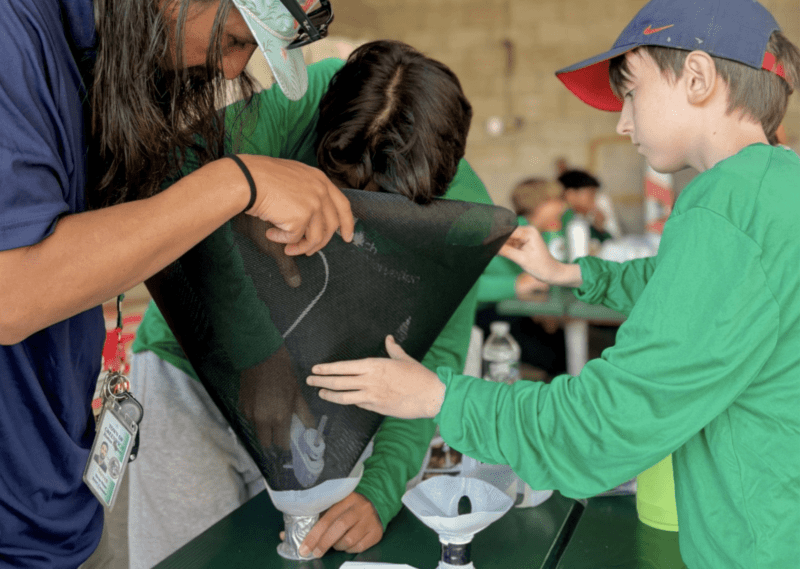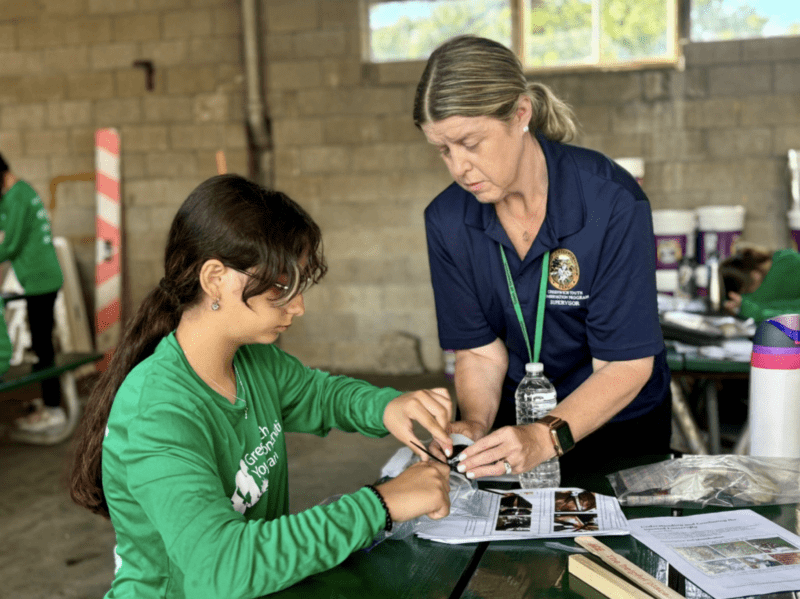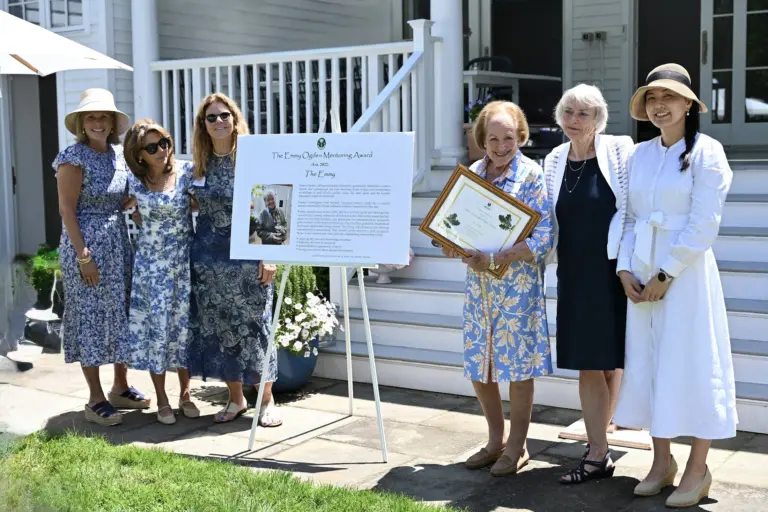
By Taite Harman
In late June, the Town of Greenwich partnered with the Greenwich Youth Conservation Program (GYC) to start a pilot program that aims to manage Spotted Lanternfly, an invasive species hailing from Southeastern Asia, throughout the Greenwich Parks.
The Spotted Lanternfly, or SLF, is a destructive pest threatening agricultural and ornamental plants. There is one generation per year, with the eggs laid in the fall and hatched in the spring. A normal egg mass contains around 30-50 eggs and can be found on trees, covering decks, homes, and more hard surfaces. Adults emerge in July and are active until winter. Juvenile SLF, known as nymphs, and adults prefer to feed on the host plant most commonly known as the Tree of Heaven. However, SLF aren’t picky eaters; they will settle for a variety of fruit, ornamental or woody trees, vines, vegetables, herbs and even grains.
Although the SLF does not bite or sting, it lives on the sap of many species and quite literally sucks the life out of them— leaving behind a sticky residue known as ‘honeydew.’ This shiny goo attracts more insects, creates destructive sooty mold, and causes staining. In short, these planthoppers seriously damage and kill plants.
Since 2023, The Town of Greenwich has been taking measures to decrease the population of SLF locally. More specifically, this past winter the Conservation Commission has been scraping egg masses from trees and removing the Tree of Heaven in local parks. But they wish to take further action and strategize new ways to manage SLF. Their plan is this pilot program.
Spearheaded by Parks Operation manager Darrin Wigglesworth, Assistant Director of Environmental Affairs Sarah Coccaro, and Environmental Analyst Rebecca Poirier, this new pilot program uses traps created by the Greenwich Youth Conservation Program which will be placed at Tod’s Point and Byram, Bruce, Pinetum, and Binney Parks. Following this installation, a weekly management plan has been put in place to have traps checked and to report activity.
The groups who have volunteered to monitor the traps are the Friends of Bruce Park, Greenwich Point, Pinetum, Pomerance, Tuchman, and Binney Parks. “We are ecstatic that all the Friends groups came together to help the Town with this project and are willing to help educate the public,” notes Coccaro
Volunteers from each of the Friends groups will check on the traps to see if they need to be replaced or maintained and communicate with Town Staff. From there, Town staff will replace traps and make any repairs. This pilot program is running until September. Phase one of this program was to collaborate with the Greenwich Youth Conservation program to make lantern fly traps.
On Thursday, June 27, twenty-eight kids from the GYC and their four supervisors met with conservationists and leaders from the Town Hall to assemble around sixty SLF traps, fifteen for each park. Lucky for the teens at the GYC, these circle-shaped traps are simple, using materials you can find at home or at a home depot; wood, netting, the tops of milk jugs, plastic bags, hot glue guns and staples. The idea is that the traps are zip tied to the side of a tree trunk so that the nymphs or adults climb/fly up through the netting and the circular milk top into the plastic bag.

Using emptied milk jugs brought in by the Friends groups, the teens started by cutting the tops off, then proceeding to hot glue the netting and wood, until finally attaching the plastic bag. Any phases so forth include installing the traps in parks and then using the aforementioned management plan to keep track of any Spotted Lanternfly sighting.
The final hope is for SLF to be managed strategically and to slow the spread of them within our local community. Sarah Cocarro says, “As this is a new pilot program and has a lot of moving pieces, we expect that as the Friends groups work with their members and work with the Town that issues will arise and then get resolved.”
As for now, while this program is kicking off, you yourself can help stop the spread using these five simple steps recommended by the Connecticut Agricultural Experiment Station (CAES).
1. Stop the spread; check for egg masses on your car from September to June when you travel in and out of quarantine zones (Greenwich, Stamford, New Canaan, Norwalk, Westport, Fairfield, Orange, Milford, Darien and Cheshire).
2. Scrape any egg masses that can be found on any hard surfaces (EX: grills, outdoor furniture, landscaping supplies, mowers).
3. Use tree traps, similar to the ones created by the GYC, to catch nymphs.
3. Remove the host plant, ailanthus altissima or Tree of Heaven.
5. Apply insecticides if necessary.
Although the invasion is damaging to our local ecosystem, it has no effect on our communities’ persistence to effectively combat the Spotted Lanternfly. With united efforts and innovative solutions, Greenwich is not just tackling a pest problem— it’s fostering a stronger, more environmentally conscious community.






